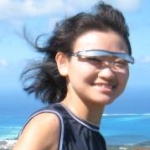TransVision 2010 Presentation by Miriam Ji Sun
Technology, Tranhumanism, Tidiness and Transgression
Transhumanism raises some fundamental questions that newly arise in a very concrete form due to developments in science and technology.
Many topics that are related to transhumanist philosophy such as immortality, the definition of life and the distinction between humans, animals and non-animate objects as well as the nature of thought, identity and being human can be traced far back in human history (e.g. Greek mythology, Chinese and Hindu tradition). Western as well as Eastern religions and philosophies have tried to find answers to these questions and to develop their own explanation models. However, through modern science and technology, these questions can be viewed in a new light.
The new findings in science, technology and transhumanist discussion also cause disruptions in worldviews commonly held by academics as well as the general public alike, which also causes controversies over the understanding and goals of transhumanism.
Conventional ‘phenomenological’ concepts challenged by science, technology and transhumanism:
Beginning and end of life (e.g. human embryonic stem cell research, definition of death in the context of brain death, organ transplantation, complex surgery, cryonics, information theory, life extension).
Definition of life (synthetic biology, AI/robotics, bionics)
Natural vs. non-natural (genetic technologies, AI/AL, Virtual Reality)
Difference between humans and non-humans and definition of ‘being human’ (chimera, AI/robots, cyborgs, HET)
Identity (neurotechnologies, neurosimulations, plastic surgery, genetic technologies, morphological freedom)
Human intelligence (AI/robotics, neurotechnologies/brain science)
New socio-economic and legal questions:
Tissue engineering and commercialisation of artificial organs
IPR and genetics
Neurotechnologies and neuromarketing
HET
AI/robots capable of doing human tasks
Liability issues in relation to AI/robots
Person rights and identity (HET, morphological freedom, AI/robots, cyborgs, neurosimulations)
The named advances in science, technology and transhumanism-related ideas also led to new controversially discussed questions:
Is it necessarily bad to alter (human) nature?
Do humans have a right not to remain purely human?
Can there be something like “trans/post-human rights”?
Can there be risks that are not related to physical harm and social justice?
Should technological progress be slowed down? (as demanded by some)?
The religious view of “human transcendence” is challenged by scientific-technological possibilities of “human enhancement”.
Transhumanism questions some of the standard viewpoints (e.g. one ought to be satisfied with ones human nature and express “humbleness”) as is thus being criticized and often misunderstood. But the questions that are of actual relevancy are:
What is scientifically/technically possible? (possibly much more than you think)
What is wanted? (depends much on popular opinion)
o Should actually include a rational and symmetric risk-benefit analysis
o Should answer the question by whom and for what?
What is being realised? (depends much on access to resources and societal factors, e.g. laws)
o Should evaluate the question if this is the best choice, and for whom?
Who can develop future technologies?
o Elites? Citizens?
Who can and should access future technologies? (equal accessibility, safety, security, responsible usage…)
Who should have the right to control future technologies? (elites, everybody?)
How much knowledge is required to use future technologies in a responsible way? (will everybody be able to make important decisions?)
What can we realistically expect of the future? (technological forecast plus socio-economic scenarios)
In a way transhumanism touches subjects that breaks with conventional categories, concepts, ideas and beliefs (e.g. distinction between human and machine, alive and dead, natural and artificial), i.e. “taboos”, and thus causes controversy. Transhumanism deals with old questions that have been connotated with “transgressions”, e.g. chimera, hybrids, creation of life and immortality in (Western) traditional and esp. religious thinking, but provides scientific and technological answers that do not always associate intrinsic rejections of such ideas, which leads to a misunderstanding of transhumanism perhaps similar to the “science wars” of the 1990s.
 |
Miriam Ji Sun is a professional strategic foresight researcher and futurist volunteer being active in NGOs and several foresight-related networks. She has obtained her phD in sociology with an interdisciplinary-oriented thesis about robotics and AI and did her master thesis in political science on a topic in biopolitics. Now Ji Sun is specialising in emerging technologies (e.g. NBIC, biomedical engineering, Human Enhancement Technologies (HET), advanced robotics and AI, synthetic biology), future issues (e.g. megatrends, weak signals, Grand Challenges), ethical, legal and social perception of emerging technologies, vision assessment, transhumanism and foresight methodology. |
TransVision 2010 is a global transhumanist conference and community convention, organized by several transhumanist activists, groups and organizations, under the executive leadership of the Italian Transhumanist Association (AIT) and with the collaboration of an Advisory Board. The event will take place on October 22, 23 and 24, 2010 in Milan, Italy with many options for remote online access.
post links to Twitter, your blogs and websites, and add your name to the TransVision 2010 Facebook page.
1 Response to “TransVision 2010 Presentation by Miriam Ji Sun”